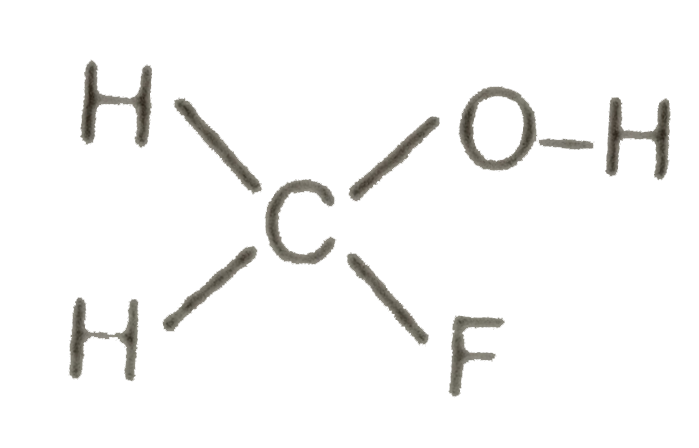Statement-1 : Strength of H-bonding depends upon temperature .
Statement-2 : H-bonding has no effect on specific heat of a substance .
Statement-3 : One hydrogen atom bonded to an electronegative element can form only one H-bond .
TTT
TFF
TFT
FFT
The correct Answer is:C
Step by step video, text & image solution for Statement-1 : Strength of H-bonding depends upon temperature . Statement-2 : H-bonding has no effect on specific heat of a substance . Statement-3 : One hydrogen atom bonded to an electronegative element can form only one H-bond . by Chemistry experts to help you in doubts & scoring excellent marks in Class 12 exams.
Topper's Solved these Questions
- BOOK - AAKASH INSTITUTECHAPTER - CHEMICAL BONDING AND MOLECULAR STRUCTURE EXERCISE - Assignment Section- I (Subjective Type Questions)10videos
CHEMICAL BONDING AND MOLECULAR STRUCTURE
- BOOK - AAKASH INSTITUTECHAPTER - CHEMICAL BONDING AND MOLECULAR STRUCTURE EXERCISE - Assignment Section J (Aakash Challengers Questions)10videos
CHEMICAL BONDING AND MOLECULAR STRUCTURE
- BOOK - AAKASH INSTITUTECHAPTER - CHEMICAL BONDING AND MOLECULAR STRUCTURE EXERCISE - Assignment Section - G (Interger Answer Type Questions)8videos
CHEMICAL BONDING AND MOLECULAR STRUCTURE
- BOOK - AAKASH INSTITUTECHAPTER - BIOMOLECULESEXERCISE - EXERCISE (ASSIGNMENT) SECTION - D Assertion - Reason Type Questions5videos
BIOMOLECULES
- BOOK - AAKASH INSTITUTECHAPTER - CHEMICAL KINETICSEXERCISE - ASSIGNMENT (SECTION D : Assertion - Reason Type Questions)15videos
CHEMICAL KINETICS
Similar Questions
Which one can form hydrogen bonds?
View SolutionStatement-1 : In the molecule

will form intramolecular H-bonding to a greater extent .
Statement-2 : Bond order greater than three is not possible .
Statement-3 : Increase in percentage of P orbital increases the directional nature of bond .View Solution
Knowledge Check
- Question 1 - Select One
Statement-1 : Intramolecular H-bonding have no effect on boiling point
Statement-2 : Nature of hydrogen bonding is non-directional .
Statement-3 : Covalent bond is directional .ATFTBTFFCFTTDTTF - Question 2 - Select One
Statement-1: In ethene both the carbon atoms are secondary.
Statement-2: Both the carbon atoms are bonded with double bond.ABoth Statements are correct but Statement 2 is not the correct explanation of Statement 1BBoth Statements are correct and Statement 2 is the correct explanation of Statement 1CStatement 1 is correct but Statement 2 is incorrectDStatement 2 is correct but Statement 1 is incorrect - Question 3 - Select One
Statement-1 The ratio of σ-bonds and π-bonds in tetra-cynomethane is 1.
Statement-2 Tetra-cyanomethane has 8π and 8σbonds.AIf both the statement are TRUE and Statement -2 is the correct explanation of Statement-1:BIf both the statement are TRUE but Statement-2 is not the correct explanation of Statement-1CIf statement-1 is TRUE and Statement-2 is FALSEDIf statement -1 is FALSE and Statement-2 is TRUE
Statement-1 : Dipole moment of NF3 is less than that of NH3.
Statement-2 : Polarity of N−F bond is less than that of N−H bond.View SolutionStatement-1 : HF form extensive hydrogen bonding.
Statement-2 : F has highest tendency to form hydrogen bonding.View SolutionHydrogen bond is weak type of electrostatic force, in which hydrogen is connected between two more electronegative elements.
Select the correct representation of H-bonding :View SolutionStatement-1: Peroxo mono sulphuric acid has low basicity.
Statement-2: It has one O-O bond.View SolutionStatement I: The heat of vapourization of HF is higher than that of H2O
Statement II : The hydrogen bond strength in HF is higher than that in H2OView Solution

